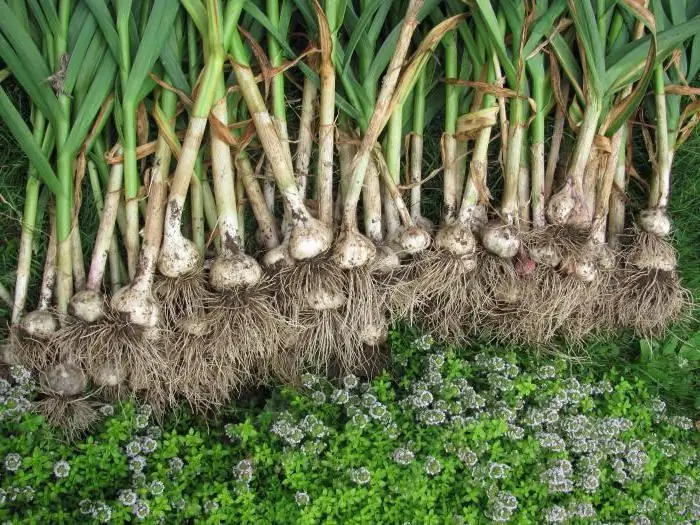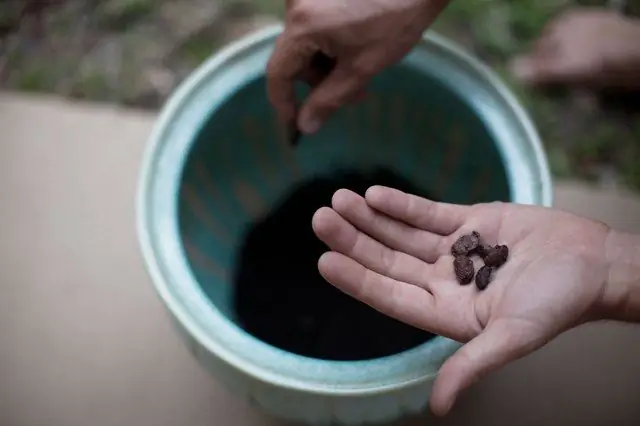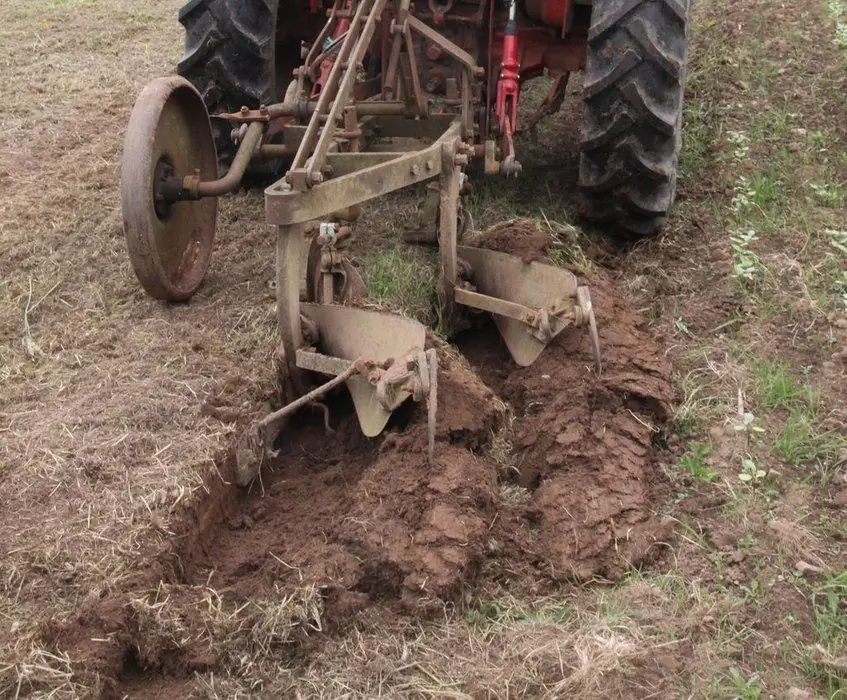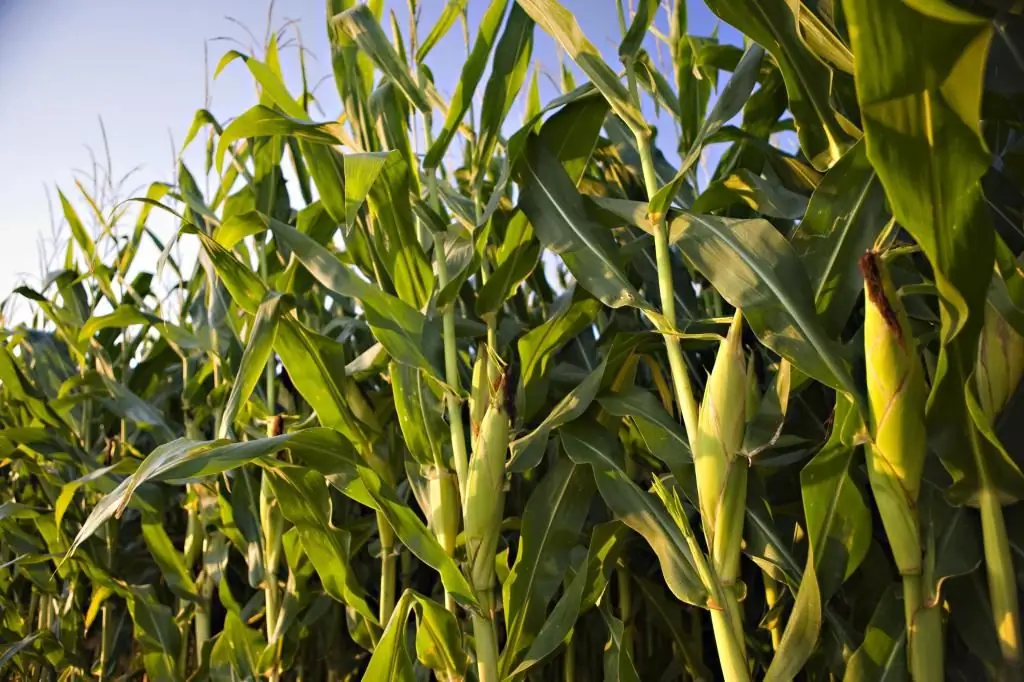2026 Author: Howard Calhoun | [email protected]. Last modified: 2025-01-24 13:10:41
Sudanese grass (or Sudanese sorghum, Sudanese) is a high-yielding agricultural crop. It grows under ideal conditions up to three meters, forming up to 120 stems from one root. With the right agrotechnics of cultivation, it gives record yields among fodder annual grasses. In the form of silage, hay, freshly cut green mass, it is used for fattening livestock.

Sudan grass: biological features
Sorghum sudanense belongs to the sorghum genus. The fibrous, powerful root system can grow 2.5 m deep and 75 cm wide. The non-pubescent cylindrical stem is filled with white spongy parenchyma. Not all varieties are tall. There are also compact plants less than a meter high with small (up to 12 shoots) and medium (12-25) bushiness. Varieties also differ in the shape of the bush:
- Upright.
- Lying.
- Reclining.
- Sprawling.
- Slightly sprawling.
It is more convenient to cut low spreading upright bushes, so Sudanese sorghum with these characteristics is the most common. Very tall Sudanese grass grows in the tropics, photowhich strikes the imagination. More compact varieties are often cultivated in Russia: grass Mironovskaya 8, 12, Kinelskaya 100, Aida, Hercules 3, Chernomorka, Volgogradskaya 77, Azimut, Brodskaya 2, Novator 151, Severyanka, Novosibirskaya 84, Kamyshinskaya 51, Zonalskaya 6 and others.

Nutritional properties
Sudanese grass in the form of hay and greens is a good nutritious food. In the green mass of protein - 3%, protein - 4.4%, sugars - 7.9-9.1%. It is beneficial to mix Sudanese with legumes, in particular, alfalfa. Such mixtures are more saturated with calcium, proteins, extractive nitrogen-free substances. The abundance of dense green mass, resistance to grazing and the ability to grow quickly (4-5 times per season) make Sudanese one of the best pasture grasses.
The nutritional quality of hay depends on the time of mowing. If it is harvested in the heading phase, a lot of crude protein will remain in the product - 14-16%. Even more protein (14.2-18.9%) will be saved if the Sudanese is mowed in the bobbing phase. Silage is recommended to be harvested when the grain is poured. By the way, silage is nutritionally comparable to corn.

Sudan grass cultivation technology
For sowing seeds, the optimal predecessors are vegetables, spiked crops (especially winter crops). Weed control required. Research by the Siberian Research Institute showed that in the conditions of the forest-steppe, a decent seed yield is obtained after a fallow, a layer of perennials, and corn.
It is important to handlesoil, taking into account its type and zoning. It is most productive to carry out the main processing in the fall. This will help saturate the earth with moisture from prolonged autumn rains and snow. In Western Siberia (forest-steppe zone), in the fall, a field is plowed deep (by 25 cm), and in the spring, in order to retain moisture, they pass in two tracks with tooth harrows. Leveling, rolling fields by planners before and after sowing ensures friendly seedlings.
With the exception of wetlands, Sudanese grass is not demanding on soils. Biological features provide a good harvest even on brackish lands. The best predecessors are peas, pelyushka, vetch, alfalfa, cabbage, potatoes. It is also beneficial to grow pulses together with Sudanese sorghum.
The faster the first and second cuttings are carried out, the greater the green mass will grow in the next 2-3 cuttings. It is recommended to harvest hay with mower-conditioners. Flattened stems wither faster and better, natural drying is accelerated.
Seed preparation

Sudan grass seeds are responsive to seedbed preparation. Etching is alternated with air-thermal heating, treatment with microfertilizers. Seeds receive a biological impulse, germinate together, are saturated with microelements with minimal fertilizer consumption.
One of the ways to activate biochemical and physiological processes is spraying before planting with special solutions containing boron (can be replaced with zinc) and manganese. In 2 liters of water dissolve 15-18 g of ordinary potassium permanganate and 6-9 g of boron s alts orzinc. This volume is enough to process 1 centner of seeds. For even distribution, the seeds are thoroughly mixed repeatedly. Before sowing, they must be dried.
A more modern method of seedbed preparation is vernalization. Pour 20 liters of water into the container, pour a centner of seeds. Wait until the seeds completely absorb water. Then they are taken out and formed into small heaps, keeping in this state for 8 days in the dark at 20-30 ˚C. To prevent rotting, the mass is regularly stirred and shoveled. It is necessary to monitor the rate of germination. If the seeds hatch too quickly, the heaps are raked. Vernalization is especially effective for seed crops.
Seeding Rates
Sudanese grass is sown only in warm soil (+10 ˚C). Seeding rate varies depending on the sowing method. With a continuous ordinary method - within 25-30 kg per 1 ha. With the wide-row method in arid regions, the norm is half as much - 10-15 kg. With enough moisture, the seeds are planted mechanically to a depth of 3-5 cm. On dried, light soils, the seeds are planted deeper - 6-8 cm. If Sudan grass is sown in a mixture with other crops, the seeding rate is reduced by 15-25%.

Seedbed preparation
Seedbed preparation is time-consuming. If you skip one of the stages, the friendliness of seedlings, tillering, and productivity will decrease. The order of operations is:
- Peeling.
- Deep autumn plowing.
- Early spring harrowing.
- Doubleseedbed cultivation.
- Pre-sowing soil compaction.
- Post-sowing soil compaction.
Timely applied fertilizers increase yields. Recommended rates per 1 ha: 20-30 kg of potash, 30-45 kg of phosphorus, 30-45 kg of nitrogen fertilizers.

Useful properties
In addition to a plentiful harvest of fodder green mass, Sudanese grass has a beneficial effect on the soil, suppresses weeds. Thanks to powerful fibrous roots, the culture increases the moisture capacity and air permeability of soils, loosens them, makes them lighter, structures, and drains with excess moisture. The soil loosened with grass passes air more efficiently, beneficial soil microorganisms and worms multiply better, accelerating the processing of humus. The plants themselves get sick less, the yield increases.
The ability of Sudanese to grow on saline soils makes it possible to include s alt marshes unsuitable for other crops in the crop rotation. In places where erosion progresses, it is also useful to sow this grass with powerful dense roots that keep soil particles from weathering, washing out.
But there are nuances. Like corn, Sudanese extracts many trace elements from the soil, impoverishing it. The problem is solved by joint plantings with bean annuals. High-quality top dressing with fertilizers also restores the microbiological balance.
Recommended:
Garlic cultivation as a business: a business plan, methods and features of technology. Growing garlic on an industrial scale

The owners of suburban areas, by definition, have a few more opportunities to organize a home business. You can, for example, not only engage in gardening or growing fruits and vegetables, but also have pets. Although, of course, many summer residents and aspiring entrepreneurs prefer crop production to caring for animals. This is not only a less labor-intensive undertaking - growing vegetables and fruits does not require such large financial investments and pays off faster
Sowing qualities of seeds: methods for determining the purity and waste of seeds

The yield of crops depends significantly on such an indicator as the sowing quality of seeds. Planting material must meet not only varietal requirements. It must also be sufficiently clean, viable, dry and viable
Spring wheat: cultivation technology, features of sowing, cultivation and care

About 35% of all grain plantings on the planet today falls on wheat. In purchases, the share of such grain is 53%. Technologies for growing spring wheat in Russia can be used differently. But when cultivating this crop, crop rotation must be observed and careful preliminary preparation of the soil must be carried out
Corn: cultivation technology, features of planting, cultivation and care

Every one of our compatriots has seen and tasted corn. However, not everyone thinks about how important culture it is. Therefore, tell about it in more detail. We will also dwell briefly on the technology of corn cultivation - it will be very useful for novice farmers to learn about this
Rapeseed: cultivation technology, meaning, features and origin

Canola cultivation technology includes procedures such as soil and seed preparation, planting and weed control. This crop can be grown for oilseeds or as green manure

